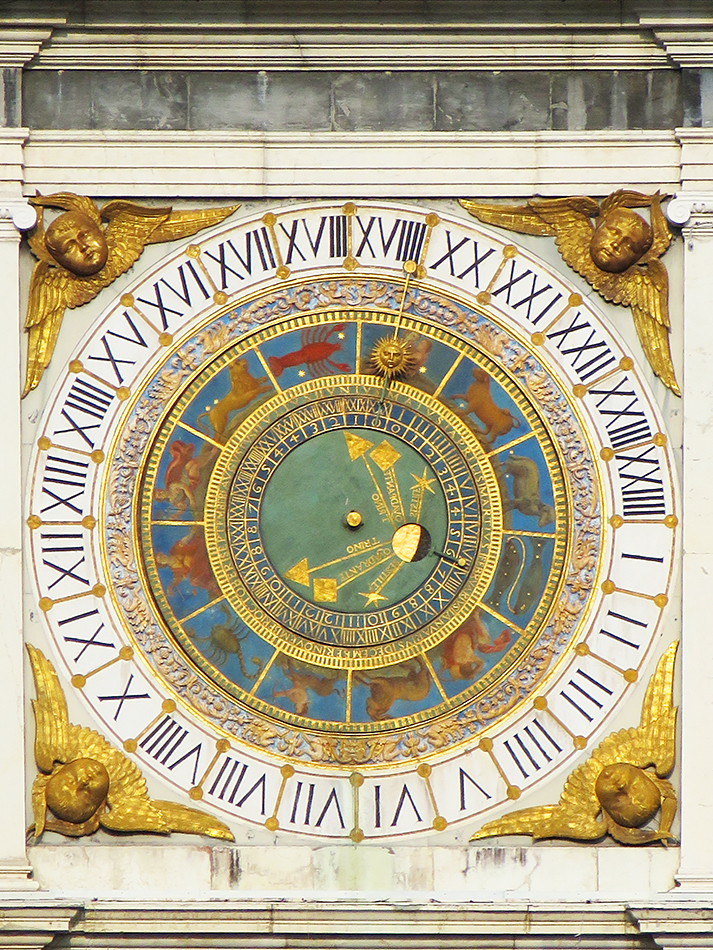
Although time and its measurement is a fundamental component of human life, a special type of clock which takes matters to the next level is the so-called
astronomical clock and whose purpose is not to measure time per se but to convey astronomical information and, in particular, the relative position of the
Sun and Moon as well as the zodiacal constellations and, in some cases, the position of the planets all as a function of time.
The oldest such effort to effectively emulate the overhead celestial sphere (ie a mini-planetarium) is the
Antikythera Mechanism which was discovered in 1901 totally by
accident by sponge divers off the coast of the Greek island of Antikythera. It has been dated to approximately 80 BC and it is believed to be the work of
Poseidonius of Rhodes. The Antikythera Mechanism is currently on display
at the National Archaeological Museum in Athens, Greece.
Note: Located in the heart of Brescia's historic center and perhaps the highlight of Piazza della Loggia, one will find the
impressive 15th century renaissance building with the dominating clock tower on the eastern side of the square. The tower commonly referred to as "Torre
dell'Orologio" was built between 1540 and 1550 AD by one of the architects of Piazza della Loggia and hosts the impressive astronomical clock of Brescia,
built in 1543, as seen below.
The outer ring is divided into 24 segments representing 24 hours (ie one full day) and is labelled accordingly with the roman numerals I through XXIV. A dial
which carries the Sun rotates by depicting the time of day on the outer dial while simultaneously indicating the Sun's position along the zodiac courtesy of
the ring which immediately follows where the twelve constellations are depicted whereas the following ring with the roman numerals I through XXX indicates the
current date of the month. The innermost ring is used to denote the age of the Moon where a new Moon is indicated by the figure of 00 (immediately below the
golden Sun) whereas a full moon is diametrically across and labelled as 12, thus appropriately representing the physical location of the Moon during its
monthly rotation around Earth while also respecting the Sun-Earth-Moon geometry. Finally, the phase of the Moon is depicted by the partially covered (lunar)
disk.
The text references to "Sestile", "Trino" and "Quadrante" visible at the core of the clock accompanied by various radiant vectors are used to describe angles
between planets (aka "aspects") which are of interest in astrology.
Note: For a view of the astronomical clock using much greater focal length, please click
here and
here.
Note: For additional results involving astronomical clocks from around the world, please click
here.
|
Body: Sun Mass: 332,900 x Earth Mass Eq Diameter: 109.1 x Earth Distance: 149 million km RA / Dec: 23h 41m 41s / +89° 19' 51" Diameter: 32.16' Magnitude: -26.8 |
 |
Date: June 11, 2023 Location: Piazza della Loggia, Brescia, Italy Equipment: Canon PowerShot SX60 HS @ 35.51 mm / f5.6 Exposure: 1 x 1/320 sec ISO 100 RAW Image Format 4768x3516 Image Size Continuous Servo Mode Manual Mode Software: Photoshop CS6 Processing: Brightness/Contrast Resampling JPG Compression |